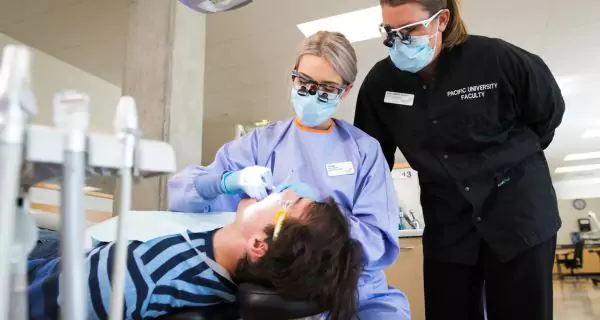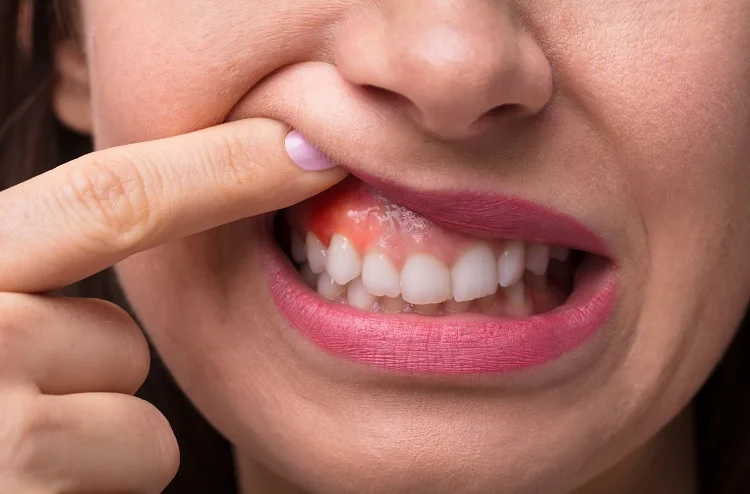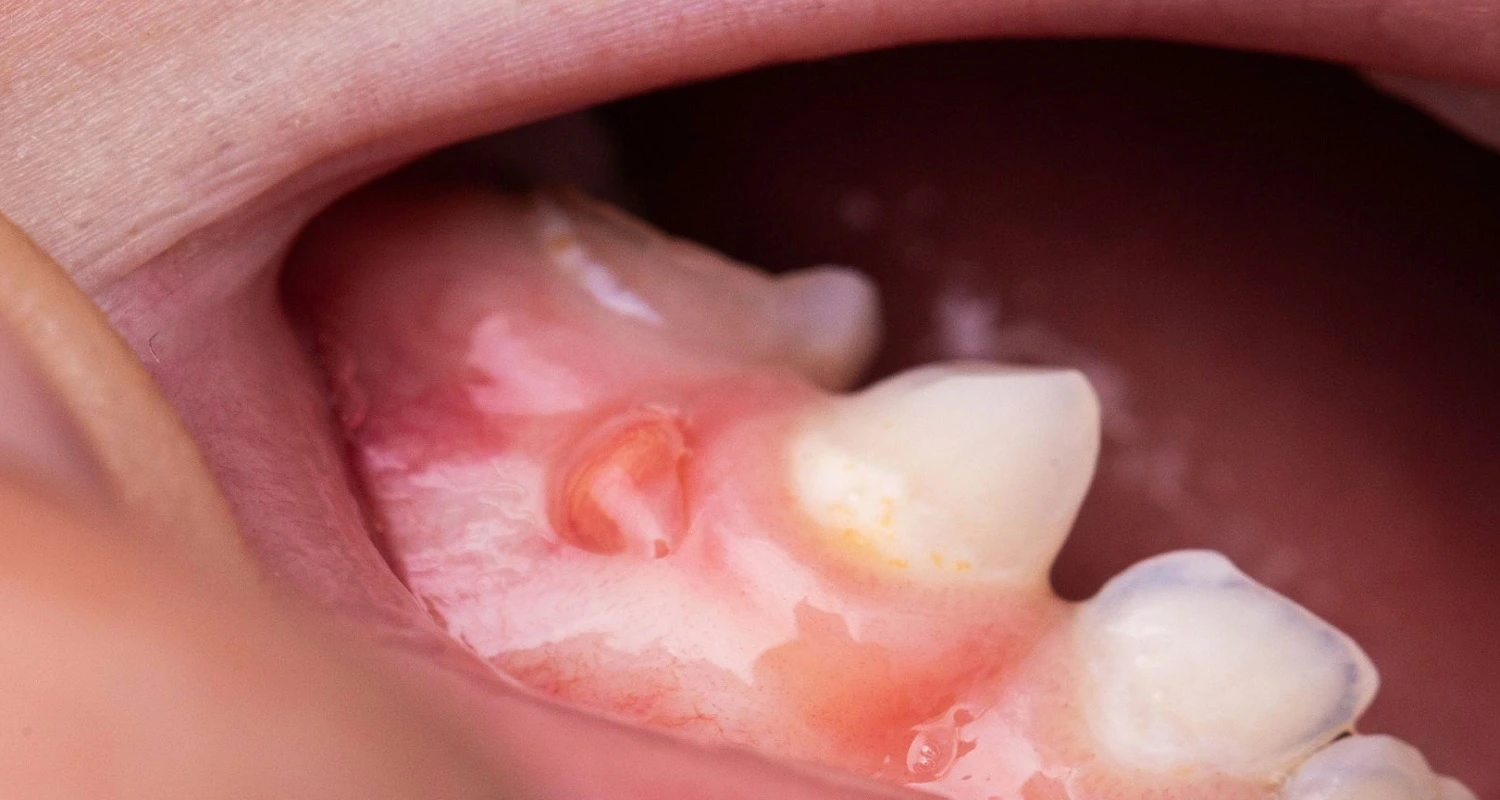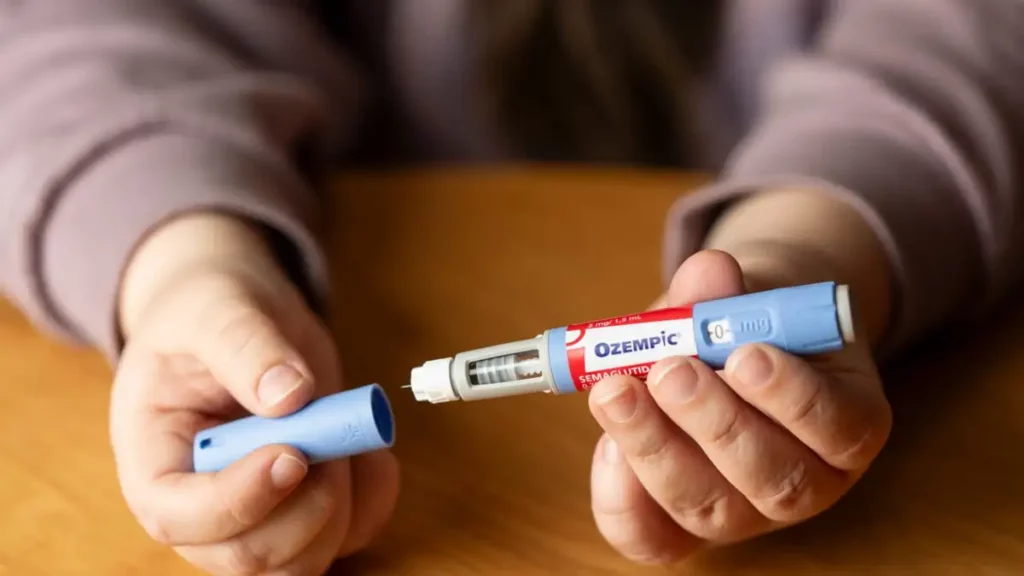Last Updated on: 19th September 2025, 12:49 pm
More than 50 billion bacteria inhabit the mouth, with the most common being streptococci, staphylococci, gram-positive, and gram-negative bacilli. These bacteria coexist in a balance formed by themselves and the properties of saliva. Odontogenic infections occur when this balance is disrupted, and bacteria invade the teeth, gums, and other areas of the mouth, causing damage, thus learning management of odontogenic infections is important.
What are the Stages of an Odontogenic Infection?
Odontogenic infections are divided into at least 2 stages; in the initial stages, the infection only affects the gums, with symptoms including pain, swelling, redness in the affected area, the appearance of abscesses in the gum (pus accumulation), bad breath, fever, swollen lymph nodes, among others.
If left untreated, these infections can cause complex health problems such as tooth loss or even spread to other parts of the body, triggering more serious infectious processes and compromising the patient’s life.
In more advanced stages of an odontogenic infection, facial cellulitis may appear. This occurs when the bacteria causing the infection in the mouth migrate to the subcutaneous tissue and fill it with pus, causing widespread and intense pain.
Other symptoms of advanced odontogenic infections include:
• General discomfort, fatigue, ear pain, headache, dizziness, and confusion
• Fever, sweating, chills, skin redness, or rashes
• Severe gum swelling, pain, and bleeding
• Diarrhea, vomiting, and abdominal pain
• Increased heart and respiratory rate
• Dehydration
• Intense facial swelling, difficulty opening the mouth, swallowing, and breathing properly.
When to Seek Professional Help?
It is important to seek specialized attention as soon as possible if you suspect that you may have an odontogenic infection. Depending on the signs and symptoms presented, the recommendation is to visit a dentist, a doctor, or an emergency service.
When to Visit the Dentist?
At the first sign of pain, a visit to the dentist should be scheduled to evaluate if there is an infection present and to control it in time.
When to Visit the Doctor or Attend the Emergency Service?
If you experience symptoms such as difficulty breathing or swallowing, or any of the aforementioned that indicate that the infection has spread deeper into the jaw, throat, or neck, or even to other areas of the body, you should seek medical attention or emergency care as soon as possible to receive immediate care.
Diagnosis of an Odontogenic Infection
During routine check-ups, odontogenic infections can be detected. If the dentist suspects an infection, they can check the tooth and the area around it and give you tips for the management of odontogenic infections. In addition, your dentist is going to perform one or more of the following diagnostic tests:
• Taking a periapical radiograph: Allows observation of the progress of the infection and determines if it has spread to other areas of the body.
• Taking a computed tomography scan: When the infection has spread to other areas apart from the mouth, such as the neck.
• Conducting thermal vitality tests: Involves placing a cotton swab soaked in a cold liquid (-58 ºF) on the surface of the affected tooth. This test helps determine if the tooth’s nerve is alive or dead.
• Conducting percussion tests: Involves tapping the tooth lightly. In the case of an infection in the root, these teeth will be sensitive to touch or pressure.
What Treatments are Available for Odontogenic Infections?
To treat the symptoms of a dental infection, the dentist must eliminate the cause of the infection and one or more of the following treatment options may be required:
1. Root canal treatment or endodontics
The nerve of the tooth is removed and the space is filled with a special material to eliminate the infection, clean the canals, and seal the tooth so that bacteria cannot continue to affect it. Within a few weeks, the infection disappears, and the tooth can be preserved for many years, even for a lifetime, as the success rate of this treatment is high.
2. Apical surgery
When a root canal treatment is performed, but the tooth still has an abscess, apical surgery is the best option. During this procedure, the root of the tooth is uncovered and part of it is cut, while the abscess is surgically removed. Then, the root is sealed, and follow-up appointments are scheduled at least every 3 months.
3. Abscess drainage
A small cut or puncture must be made in the abscess to drain the pus. In some cases, an elastic band is placed to keep the perforation open and continue draining. This treatment can relieve the discomfort of the abscess, but it does not eliminate the infection.
4. Tooth extraction
Sometimes, it is not possible to save the tooth, and it must be extracted. After the tooth extraction, the infected area must be cleaned thoroughly.
5. Prescription of medications
The use of antibiotics can help manage infections and prevent them from worsening and spreading throughout the body. The prescribed medication will depend on the type of bacteria that caused the infection. Some antibiotic options include:
• Penicillins
• Cephalosporins
• Metronidazole
• Clindamycin
• Quinolones
• Macrolides
Remember that the use of medication should only be under the prescription of a healthcare professional, as they can pose serious problems if used freely and without control.
6. Hospitalization
In cases of very severe infections that have caused sepsis, intrahospital management with intravenous antibiotics that can combat the infection is ideal, followed by surgical abscess drainage.
Home Remedies
There are several recommendations you can follow at home to help alleviate some of the pain and swelling caused by an odontogenic infection:
• Rinse your mouth with saltwater
• Rinse your mouth with baking soda
• Apply clove oil
• Apply peppermint tea bags
• Apply oregano oil
• Apply cold water compresses
• Rinse your mouth with hydrogen peroxide
Remember that these remedies do not solve the problem, they provide temporary relief; it is advisable to consult a dentist to treat the infection safely and effectively.
Prevention and Management of Odontogenic Infections
How to avoid a dental infection?
• Maintain proper oral hygiene, use toothpaste with fluoride, brush and floss your teeth at least twice a day.
• Use an antiseptic or fluoride mouthwash.
• Change your toothbrush every 2 to 3 months, or when it looks or feels worn.
• Maintain a balanced diet with plenty of fruits and vegetables, and reduce sugar consumption.
• Avoid habits such as smoking or drinking alcohol.
• Schedule regular visits to the dentist, at least twice a year for professional check-ups and cleanings.
Acquiring these good habits can help maintain oral health, and if there is an infectious process, detect it in time to give treatment before it is too late.
If you want more information about odontogenic infections, what they are, what causes them, the symptoms, and possible complications, you can visit an article on our website that explains it in-depth.
Frequently Asked Questions
How do dentists typically treat odontogenic infections?
Odontogenic infections, which originate within the tooth or surrounding tissues, often require surgical intervention to drain and remove the source of the infection.
The type of surgery will vary depending on the severity of the infection. Here’s a range of procedures that might be used:
a. Endodontic therapy: This is a root canal treatment that removes infected pulp tissue from the inside of the tooth.
b. Simple incision and drainage: This involves creating a small opening in the gum tissue to allow pus to drain from the infection site.
c. More complex surgery: In severe cases, involving deep facial or neck infections, a wider incision may be needed in the submandibular region (below the jaw) or even mediastinal exploration (surgery in the chest cavity).
The severity of the infection will determine the specific surgical approach necessary.
How Are Odontogenic Infections Best Managed?
Penicillins: Penicillins are regarded as the primary choice for treating odontogenic infections. They work by disrupting the cross-linking process in the bacterial cell wall, making them bactericidal. Although penicillins have a relatively narrow antimicrobial spectrum, they are effective against most bacteria linked to odontogenic infections.
How Do You Treat an Acute Odontogenic Infection?
Antibiotics are commonly employed in dental procedures to manage various types of infections, including odontogenic infections, nonodontogenic infections, local infections, focal infections, and for prophylactic purposes.
What Is the Most Common Odontogenic Infection?
The most prevalent type of odontogenic infection is the periapical infection. While these infections are typically localized to the area around the alveolar ridge, they have the potential to spread into deeper fascial spaces.
Share:
References
1. Abscessed Tooth: Tooth Infection Symptoms & Treatment. (s. f.). Cleveland Clinic. https://my.clevelandclinic.org/health/diseases/10943-abscessed-tooth
2. Ahmadi, H., Ebrahimi, A., & Ahmadi, F. (2021). Antibiotic Therapy in Dentistry. International Journal of Dentistry, 2021, 1-10. https://doi.org/10.1155/2021/6667624
3. Jay, K. (August 12, 2022). 10 Home Remedies for a Tooth Abscess. Healthline. https://www.healthline.com/health/home-remedies-for-abscess-tooth
4. Jevon, P., Abdelrahman, A., & Pigadas, N. (2020). Management of odontogenic infections and sepsis: an update. British Dental Journal, 229(6), 363-370. https://doi.org/10.1038/s41415-020-2114-5
5. Tooth abscess – Diagnosis and treatment. Mayo Clinic. (June 29, 2022). https://www.mayoclinic.org/diseases-conditions/tooth-abscess/diagnosis-treatment/drc-20350907
6. Von Arx, T. (2011). Apical surgery: A review of current techniques and outcome. The Saudi Dental Journal, 23(1), 9-15. https://doi.org/10.1016/j.sdentj.2010.10.004
7. Duran, R. (Reviewed November 13, 2021). What Is an Abscessed Tooth? WebMD. https://www.webmd.com/oral-health/guide/abscessed-tooth
-
Nayibe Cubillos M. [Author]
Pharmaceutical Chemestry |Pharmaceutical Process Management | Pharmaceutical Care | Pharmaceutical Services Audit | Pharmaceutical Services Process Consulting | Content Project Manager | SEO Knowledge | Content Writer | Leadership | Scrum Master
View all posts
A healthcare writer with a solid background in pharmaceutical chemistry and a thorough understanding of Colombian regulatory processes and comprehensive sector management, she has significant experience coordinating and leading multidisciplina...




















